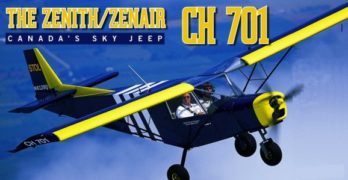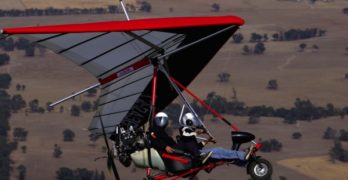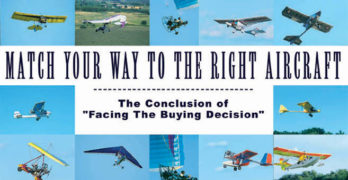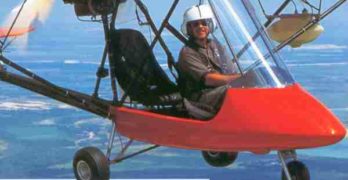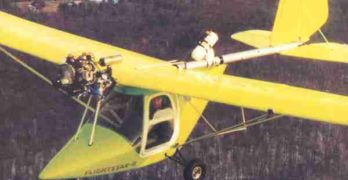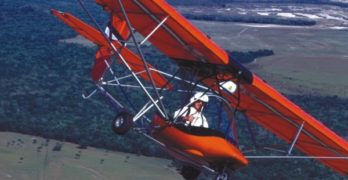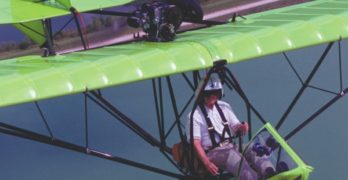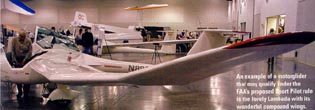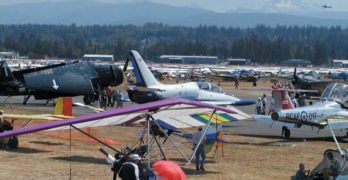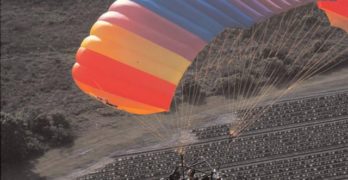Pilots will go to great lengths to fly airplanes they like. I went to the Czech Republic to fly the CH 701. That’ s a long way, and I did like the airplane. The experience tells a story of light-sport aircraft development that may become increasingly common.
Like most light plane pilots, I’ve long been familiar with the designs of Swiss-born engineer Chris Heintz. His many aircraft models have put some 2,000 builders in the air. The low-wing, Piper Cherokee-like CH 601 is far and away the most popular air plane he’s designed, with it representing more than 60 percent of all Zenith models sold. Yet, perhaps the most distinctive-looking design he’s offered is the short takeoff and landing (STOL) capable CH 701, the subject of our discussion this month. Now the world grows smaller with Heintz’s Canadian designs being manufactured in the Czech Republic and freighted to the United States for fun in the sky.
Search Results for : Four stroke and ultralight
Not finding exactly what you expected? Try our advanced search option.
Select a manufacturer to go straight to all our content about that manufacturer.
Select an aircraft model to go straight to all our content about that model.
Simple Done Right
AirBorne’s Outback trike has all the essentials
Light-sport aircraft (LSA) are on the minds of many would-be sport pilots, especially now that the proposed rule has advanced from the Depart-ment of Transportation (DOT) to the Office of Management and Budget (OMB) for its last review. But the big-picture view of these airplanes is complex. Yes, we’ll have sleek im-ported machines like the CT2K, G3 Mirage, SkyBoy, or SportStar, but we’ll also have much more. We will also still have popular American-made machines like Zenith’s CH 601, SkyStar’s Kitfox, Quicksilver’s MX or GT series, RANS’ Coyotes, Quad City Ultralight’s Challenger, and more. And we’ll have trikes, powered para-chutes, gliders, airships, gyros, and who-knows-what-else. The new LSA category actually represents a virtual zoo of different aerial animals. The fiberglass or metal versions that may enter our market from Europe are but the upper end of the spectrum, in both speed and price.
Trikes, in particular, may be one of the earlier qualifying entries.
How-to-Buy a Lightplane — Part 3 of 3
In the previous two installments, we’ve discussed you, the pilot, and the many types of aircraft choices you have. As we wrap up this series, we’ll put it all together and try to help you narrow your choices to a few models.
Notice the word “try.” It is important that you understand that it is not possible to direct you to the one-and-only best choice of aircraft. Novice buyers often seek assistance but even experienced pilots can become swayed and end up purchasing the wrong aircraft for their needs and desires. Because aircraft purchases are commonly emotional decisions, it is helpful to gain a “second opinion” to help make a more rational choice.
Many years ago, at the beginning of my career writing articles in light aviation, I made a similar attempt to help hang glider pilots choose the right glider. I compared nine contemporary models to an idealized “perfect” glider and through a series of questions much like those below, tried to steer pilots to the one right glider for them.
ASAP — Beaver
A decade ago, the popular Canadian ultralights the Beaver and Chinook appear to be in danger of disappearing. Fortunately that’s no longer the case thanks to the Holomis family and their purchase of these two classic Canadian designs. Even better, during the last 10 years the company has made improvements to the design while leaving alone their basic shape and appeal. A “Plus” added to the name is the simple indicator that means many small improvements.
With a thriving family machine shop operation providing a foundation, the company makes good use of its engineering and fabrication capabilities to support the airplane business. This synergy is appreciated by anyone buying the aircraft in the last decade. It gives Aircraft Sales and Parts (ASAP) staying power that assures customes.
While both the ultralights have a substantial following is (the Beaver has sold in the thousands by itself), the Chinook has become my favorite of the two thanks to its agile handling and spectacular visibility.
Flightstar Inc. — Flightstar II + HKS Engine
Daring to take on deeply entrenched Rotax, Flightstar/H-Power has introduced the first light aviation four-stroke engine to see broad acceptance. Joined with their smoothly contoured Flightstar II, you can have a deluxe ultralight or lightplane that will provide years of flying enjoyment.
While two strokes do the job for most ultralight enthusiasts, the four stroke 700E engine from HKS of Japan offer assurances some pilots demand. With its particular strength of mid-range torque, the HKS engine brings interesting differences. Pull up the nose while revolutions are set in the 4000s and the HKS will haul the Flightstar II aloft with no evidence of prop loading common among two stroke engines.
Flightstar still sells lots of their very popular IISL models, but on this lighter aircraft, they recommend the Rotax 503. However, now that the same company has adapted the stronger HKS engine, sales are soaring for their Flightstar II with its beautifully formed all-fiberglass cockpit enclosure.
Getting Up On A Breese
A M-Squared solidifies its position in the ultralight industry, the company rounds out its line of models with a pair of single-seaters to complement two 2-seaters already completed.
Welcome to fresh Mississippi Breeses.
M-Squared was born of a collaboration of 17-year Quicksilver veteran Paul Mather, and South Mississippi Light Aircraft (SMLA) owner Ronnie Smith. Mather started and solely owns M-Squared, but the two men have established a complementary working relationship.
Ronnie Smith and his wife built their SMLA operation into a regional powerhouse, selling Quicksilvers and other models through a chain of subdealers. Smith also established the southern enterprise as one of the few official American Rotax sales and service outlets and is also a supplier of many ultralight accessory items.
Mather conceived how Smith’s presence in the business might be combined with his own depth of experience and M-Squared rose as powerfully as the early 80-hp Rotax 912-equipped aircraft he debuted in the spring of 1997.
Golden Circle Air’s T-Bird I Is Easy On Pilots
Ten years ago, in the spring of ’93, I flew and reported on the nosewheel T-Bird I. Part 103 was barely 10 years old then and Sport Pilot/Light-Sport Aircraft concepts were a decade in the distant future.
This month we’re going to take a look at the taildragger T-Bird model. The good news through this passage of time is that the T-Bird I remains a delightful aircraft to fly. Anyone entering ultralight aviation should consider this plane among the fleet of possibilities.
Maybe you’re a bit overwhelmed by the steady stream of talk about FAA’s proposed Light-Sport Aircraft rule. The concept may be a bright light on the aviation horizon, but with another 6 months or more to wait, the patience of many pilots is wearing thin.
Even though I’m excited about this proposed new class of aircraft, I remain a true believer in the lighter, simpler, less expensive theory of ultralight aircraft.
AirSports Expo 2002
AirSports Expo attracts a large crowd and many vendors.
On the first day in Ontario, California, you could see this was going to be the largest AirSports Expo yet. In the shadow still lingering from September 11, many wondered and worried about participation and attendance, but the concern was baseless. A flurry of activity in the last few weeks before the show brought so many requests for exhibit space that the already designed floor plan had to be scrapped and redrawn.
More than 2200 pilots and other visitors saw the exhibits of 65 vendors. While still small next to Sun ’n Fun or AirVenture Oshkosh, this was a good turnout. The range of vendors included many aircraft suppliers and all manner of accessories and informational products.
Gathering of Eagles
AirSports Expo represents the combined efforts of the Soaring Society of America (SSA), the U.S. Ultralight Association (USUA), and the U.S. Hang Gliding Association (USHGA).
New Aircraft Arrive at Arlington
With 200-foot-tall trees and mountain peaks topped with snow throughout the year, Washington is a scenic place for an airshow. Despite a drought that caused the grass to crunch underfoot, light aviation looked alive and well at the EAA’s Arlington gathering for 2003.
Local Boys Make Good
One main attraction was the much-anticipated RV-10 four-place aircraft that drew big crowds. But a Washington-area group also revealed their efforts of past months. Sport Flight Aviation displayed in the ultralight area with the first of 50 kits in progress. Two completed Talons—the last of the old design—stood alongside a new Typhoon. The new closely resembles the old.
Company owners Todd Thompson and Ron Osborne took pride in showing me extensive CAD-generated drawings printed after a lengthy effort to document the popular northwest design. Each of the men operates a non-aviation business. They teamed up to resuscitate a company left leaderless after the death of its founder, Roger Bitton.
Gemini Twin
A New Powered Parachute From a Well-Known Leader
Randy Snead branches out into his own company
Once an important figure in
Buckeye Industries, Randy is
known to many as the man
who worked on the technical
side and performed flight-testing for
Buckeye. When the former company fell
into struggle (see Editor’s Note), Randy
departed to do his own thing. Customers
who followed state, “It’s the people
behind the company” that are important.
I can find no argument with this
approach; we all tend to trust those we
know.
In turn, Randy is assisted by people he
trusts. His wife, Fern, is the business
manager and also operates the parts and
ordering department for the young firm.
Their son, Jeremiah, has experience in
general aviation aircraft, weight-shift
trikes, and powered parachutes, and he’s
built many powered parachutes. In the
EAA way, Gemini Powered Parachutes is
a family affair.
Introducing Gemini
Powered Parachutes
“It’s the American way” say others.
- « Previous Page
- 1
- …
- 11
- 12
- 13
- 14
- 15
- …
- 17
- Next Page »


